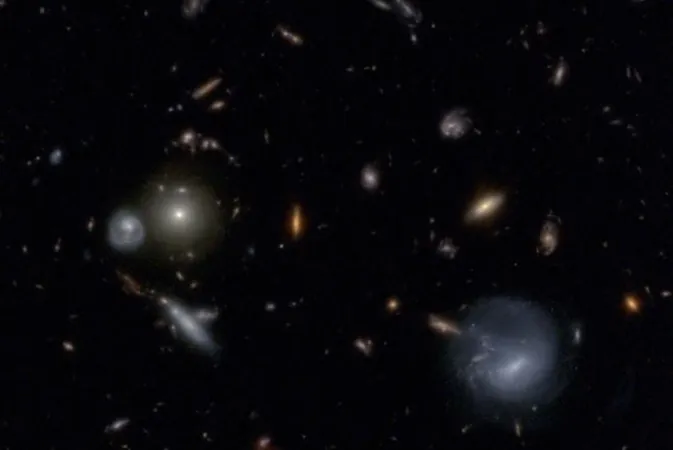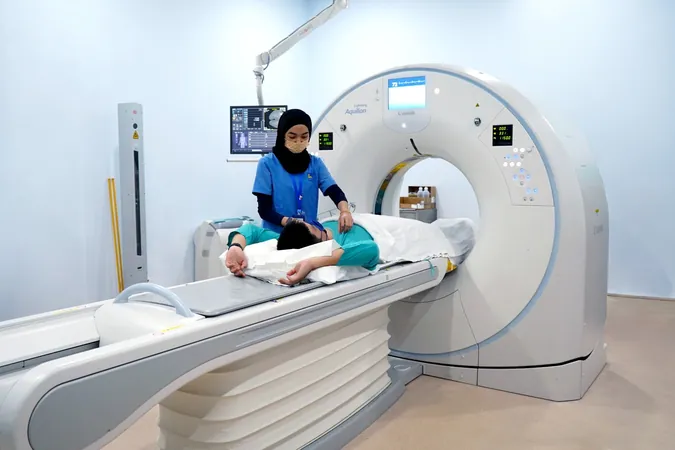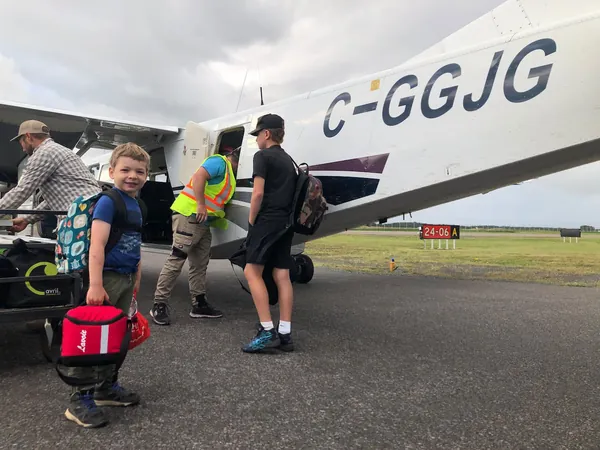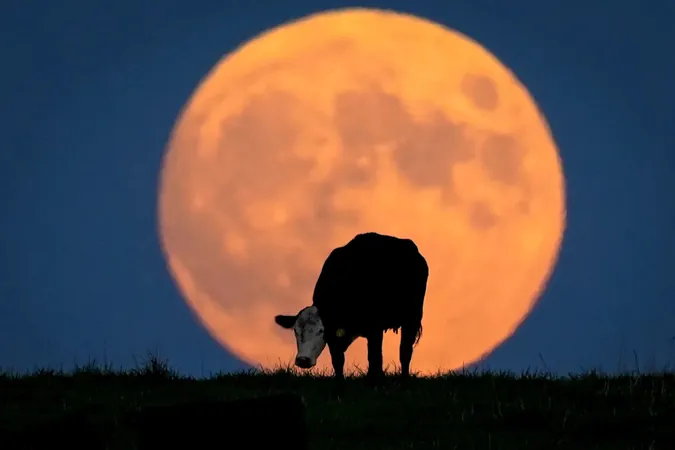
Unlocking the Secrets of the Cosmic Dawn: How MINERVA is Revolutionizing Our Understanding of the Universe
2025-09-04
Author: Emma
Dust: The Unlikely Foe of Astronomers
In the vast and mysterious expanse of the cosmos, one would think that complex phenomena like supermassive black holes or enigmatic bursts of extragalactic radio waves would pose the greatest challenges to astronomers. Yet, it turns out that the humble dust particles scattered throughout the universe present a formidable obstacle—one that the cutting-edge James Webb Space Telescope (JWST) was engineered to confront.
Peering Back to the Origins of the Universe
Astronomers aiming to unveil the secrets of the universe's earliest galaxies face a unique dilemma: dust can create misleading impressions, causing relatively younger galaxies to appear ancient. This distortion is particularly critical for the JWST, which aims to peer deep into the cosmos to explore how the first stars and galaxies were born.
Introducing MINERVA: A Game-Changing Observational Program
Enter MINERVA (Medium-band Imaging with NIRCam to Explore ReVolutionary Astrophysics), an innovative observing program set to re-examine previously studied galaxy fields with an unprecedented approach. Utilizing wavebands not deployed before, MINERVA seeks to untangle the dust dilemma and uncover elusive and rare galaxies that might have slipped through the cracks of earlier observations. The key? Focusing on unique outliers that often hold essential insights into our cosmic past.
The Power of Collaboration: MIRI and NIRCam Unite
In a groundbreaking research effort led by Adam Muzzin at York University, in collaboration with Danilo Marchesini from Tufts University, MINERVA will amalgamate observations from both the Mid-Infrared Instrument (MIRI) and the Near Infrared Camera (NIRCam). This synthesis will yield more detailed observations than either instrument could achieve independently, effectively shining a light on the dust-obscured realms of the universe.
Creating the Ultimate Multi-Wavelength Catalog
"High-quality multi-wavelength imaging has been vital for almost every major advancement in our understanding of galaxy formation," note the authors. Now, MINERVA aims to build a comprehensive multi-wavelength photometric catalog that will serve as a foundation for future spectroscopic studies, paving the way for discoveries in the decades to come. As Marchesini stated, "The objective is to create the ultimate dataset for extragalactic astronomy science."
Exploring New Frontiers: Targeting Extragalactic Fields
MINERVA will meticulously observe four extragalactic fields previously examined by JWST—UDS, COSMOS, AEGIS, and GOODS-N—leveraging approximately 387 hours of observing time. Given that JWST observing slots are in high demand, these types of datasets are a rarity, making MINERVA's contributions even more invaluable.
Unraveling the Mystery of the Little Red Dots
Among its many objectives, MINERVA will investigate the enigmatic Little Red Dots (LRDs)—small, red cosmic objects believed to date back as far as 600 million years after the Big Bang. While theories abound regarding their nature, widespread agreement remains elusive. The leading hypothesis suggests they could be primordial galaxies hosting supermassive black holes.
The Cosmic Dawn: A Critical Epoch in Cosmic History
MINERVA aims to shed light on the Cosmic Dawn, a pivotal era when the first stars, galaxies, and black holes emerged. Understanding this period, which marked a fundamental transition from a universe dominated by neutral hydrogen to one brimming with stars, is crucial for unraveling the origins of the modern universe.
The Quest for Clarity: Distinguishing Between Galaxy Types
MINERVA will empower astronomers to differentiate between various emission sources, enabling a clearer understanding of supermassive black holes, fully formed stars, and intense star formation regions. This program aims to enhance knowledge of star formation rates and stellar masses, significantly increasing the number of extragalactic fields available for study.
Join the Cosmic Adventure: The Future of MINERVA
Scheduled to run for about a year starting July 25th, MINERVA promises to enrich the existing datasets with crucial insights about the evolution of the universe. When its mission concludes, this initiative will become an integral part of deep field imaging datasets, enhancing our understanding of galaxies for years to come. As Marchesini emphasizes, MINERVA is not just about uncovering new findings; it's about addressing fundamental questions about the growth of supermassive black holes and their relationship with their host galaxies.









 Brasil (PT)
Brasil (PT)
 Canada (EN)
Canada (EN)
 Chile (ES)
Chile (ES)
 Česko (CS)
Česko (CS)
 대한민국 (KO)
대한민국 (KO)
 España (ES)
España (ES)
 France (FR)
France (FR)
 Hong Kong (EN)
Hong Kong (EN)
 Italia (IT)
Italia (IT)
 日本 (JA)
日本 (JA)
 Magyarország (HU)
Magyarország (HU)
 Norge (NO)
Norge (NO)
 Polska (PL)
Polska (PL)
 Schweiz (DE)
Schweiz (DE)
 Singapore (EN)
Singapore (EN)
 Sverige (SV)
Sverige (SV)
 Suomi (FI)
Suomi (FI)
 Türkiye (TR)
Türkiye (TR)
 الإمارات العربية المتحدة (AR)
الإمارات العربية المتحدة (AR)